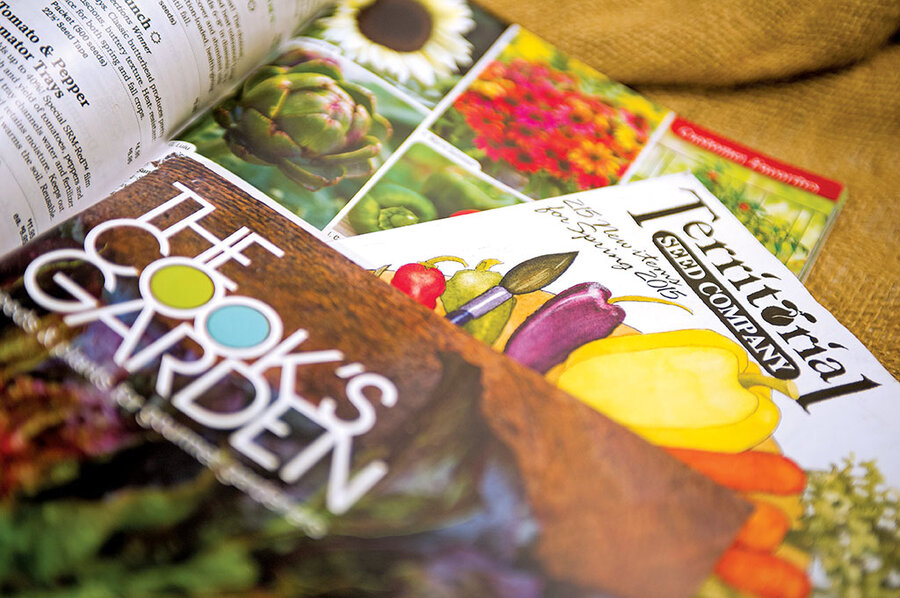How to conquer the catalog invasion
Loading...
Dreaming of a bountiful garden, but puzzled by the wave of plant and seed catalogs that dazzle with tempting choices? Here are some tips to guide you.
Catalogs are excellent references, but, more important, they are a great resource for new or hard-to-find plants. But don’t judge a plant by its glamorous picture. Chances are that these beauty queens were grown under optimal conditions. Your results will vary, depending both on the weather and the amount of time you spend in the garden.
First, decide if you want seeds, plants, or both. Starting seeds at home is rewarding and less expensive than buying plants, but it demands a greater commitment of time and supplies. You have to carefully plan when to sow, counting back days from the last frost in spring. Buying plants is easier, and more costly.
Then, think about what you want to grow. Next, decipher exactly what these catalogs are selling.
Apart from proper soil preparation, the key to success is to determine what you should (and shouldn’t) plant. Spend a little time understanding the needs of the plant and you’ll save time and money by buying only those plants or seeds that are suited to your climate, garden conditions, and temperament.
Don’t rely on common names for plants, as they vary regionally; learn the botanical name. Know your USDA hardiness zone and discipline yourself to buy only plants hardy to that zone.
Most catalogs have a couple of pages of information on the ins and outs of that particular catalog. If it uses horticultural hieroglyphics – symbols, icons, codes, or abbreviations – the key is found in the front or at the bottom of each catalog page.
Often, garden catalog companies assume you know some basics, so they resort to a few one-word descriptors:
Annuals, biennials, perennials: Annuals generally flower and live for only one year. Biennials grow only foliage their first year and flower the second. Perennials live for many years, often not flowering for the first year or two.
New or improved: The plant may be an old variety that is new to that catalog or back after years of absence. It could also mean that it has been changed in some trait, perhaps substantially.
Hardy: It’s often used to describe plants that tolerate cold.
Resistant: It’s often preceded by the words “disease,” “insect,” or “deer.” Note that “resistant” is not the same as “proof.”
Self-cleaning: These are plants that drop their spent flowers to make room for new blossoms.
Vigorous: It usually describes plants that could be invasive. Similarly, “fast grower,” “self sows,” “spreads,” or “naturalizes” may refer to a plant’s proclivity to take over a garden.
F1 Hybrid: This is a first-generation cross between purebred strains that will not produce seed with the same characteristics. You’ll need new seeds every year.
Open-pollinated: It produces seed with the same characteristics, allowing you to save seed for the next year.
Heirloom: It’s a variety that has been around at least 50 years.
Days: It usually refers to “harvest.” It may mean “from the time you sow the seeds outdoors” or “from the transplant date.”
Don’t get carried away and order more than you or your garden can handle. (But I’m still having trouble with that!)







